We Create Enduring Experiences
An ideal destination for thrill, excitement, and adventure.
View Our List of Activities

Guided Visit to a Himba Village
Join one of our local Himba guides to visit a Himba village and learn how Africa’s semi-nomadic people live, work and worship.
Learn More
Through the guide’s interpretation, you will be able to exchange information and take pictures and videos of the Himba family as they describe themselves. This is one of our daily activities that take place early in the morning post your breakfast. Depending on your interests, we will take you to a traditional Himba graveyard and the local primary school. We bring back our guests by 11:30 am so that they can freshen up for lunch.
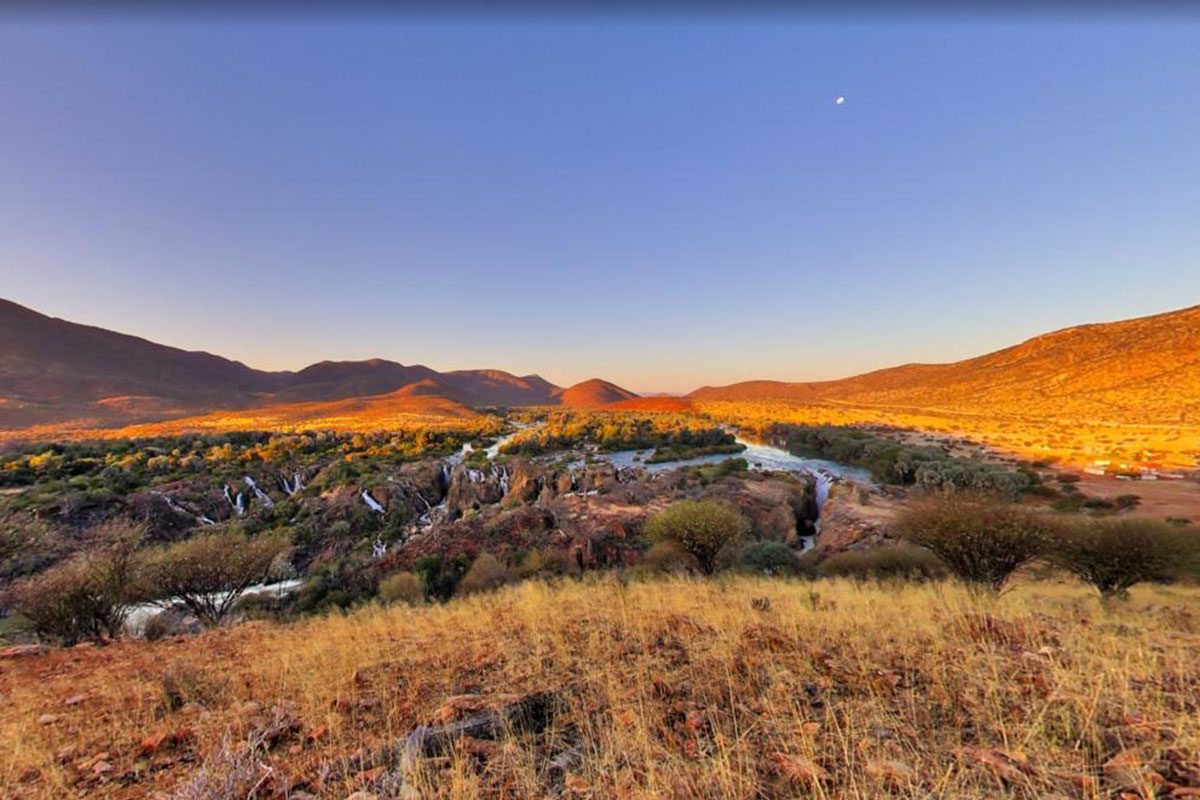
Sundowner
The Epupa Falls, a series of cascades that drop 40 m over a distance of approximately 1.5 km, is just 800 m west of Epupa Camp and is an easy walk.
Learn More
Every evening, approximately an hour before sunset, we take you to the Epupa Falls and then to the top of one of the hills overlooking the waterfalls for a sundowner in our safari-style vehicle. Enjoy a gin and tonic or any of Namibia’s excellent beers as the surrounding desert landscape explodes in colors and fascinating shadows. After exploring all the beauty, we return to our respective lodge and freshen up for dinner.
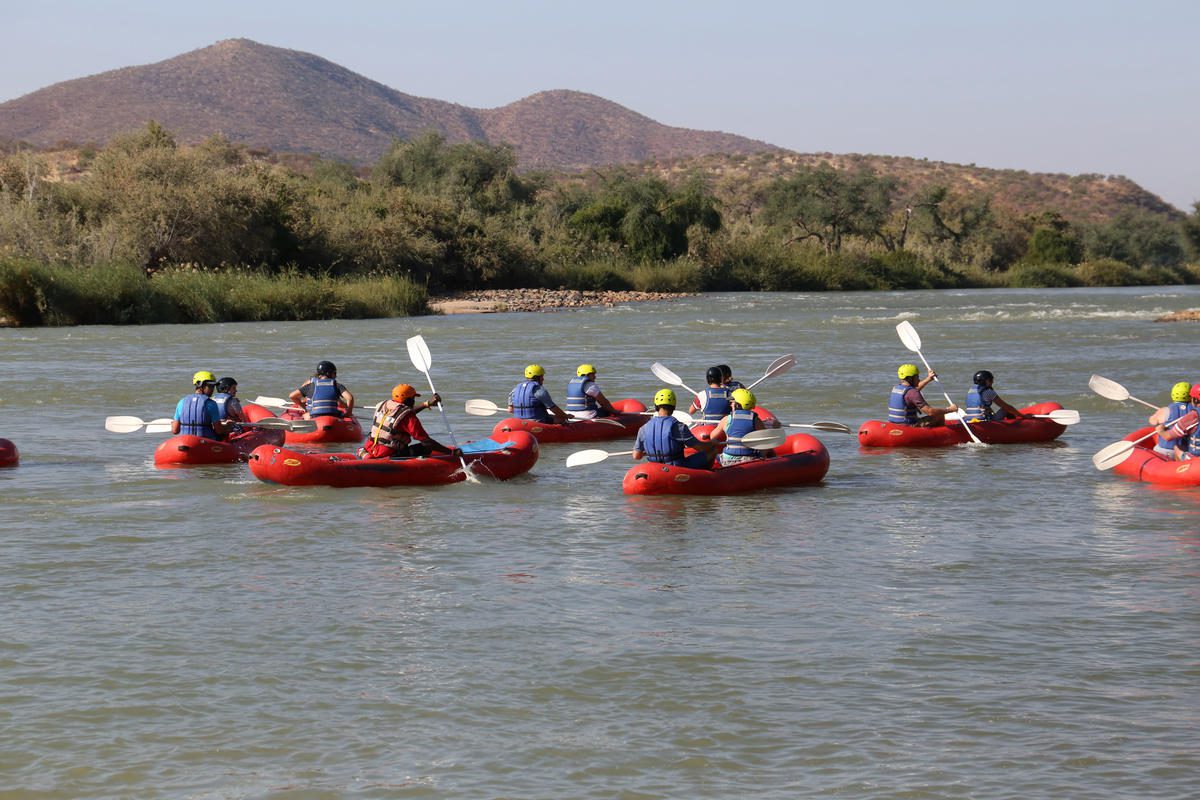
Rafting
For those of our guests who want more than just to gaze at the Kunene River, we offer seasonal rafting trips twice daily. Rafting activities take place between May and November.
Learn More
Those who do not want to paddle or are a bit wary of the water, we have 8-seater rafts where our guides do the paddling and maneuvering for you. However, the greatest fun is the 2-seater crocs, where you and your partner do the paddling. No prior rafting experience is required. Our guide will instruct you and also give you a safety briefing. Helmets, safety jackets, and dry bags for cameras and other personal belongings are provided.
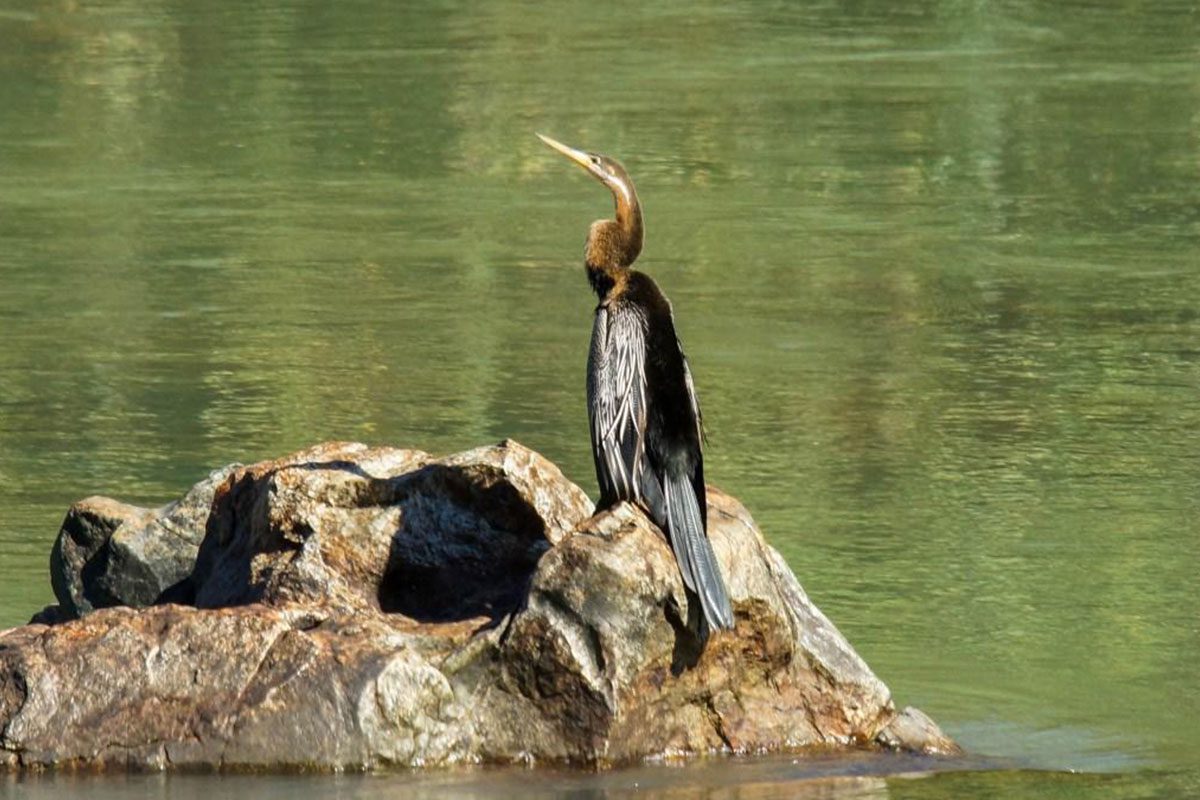
Bird Watching Trip by Boat
For bird lovers, we offer river birding trips where our expert guide will point out some of the 238 recorded species that inhabit the Kunene region.
Learn More
We’ve named a few of the many species of birds that you’ll watch. See below:
- Rufous-tailed Palm-Thrush (a permanent resident at our camp)
- Monteiro’s Hornbill
- African Paradise
- Goliath Heron
- African Fish-Eagle
- Bee-eaters
- Kingfishers ranging from the giant to the tiny Malachite Kingfisher
- Bulbuls, rollers (Purple, Lilac-breasted and European)
- Rosy Faced Lovebird
- Golden, Spectacled and Lesser Masked-Weaver
Sunbirds.
Exclusive birding trips need to be booked well in advance.
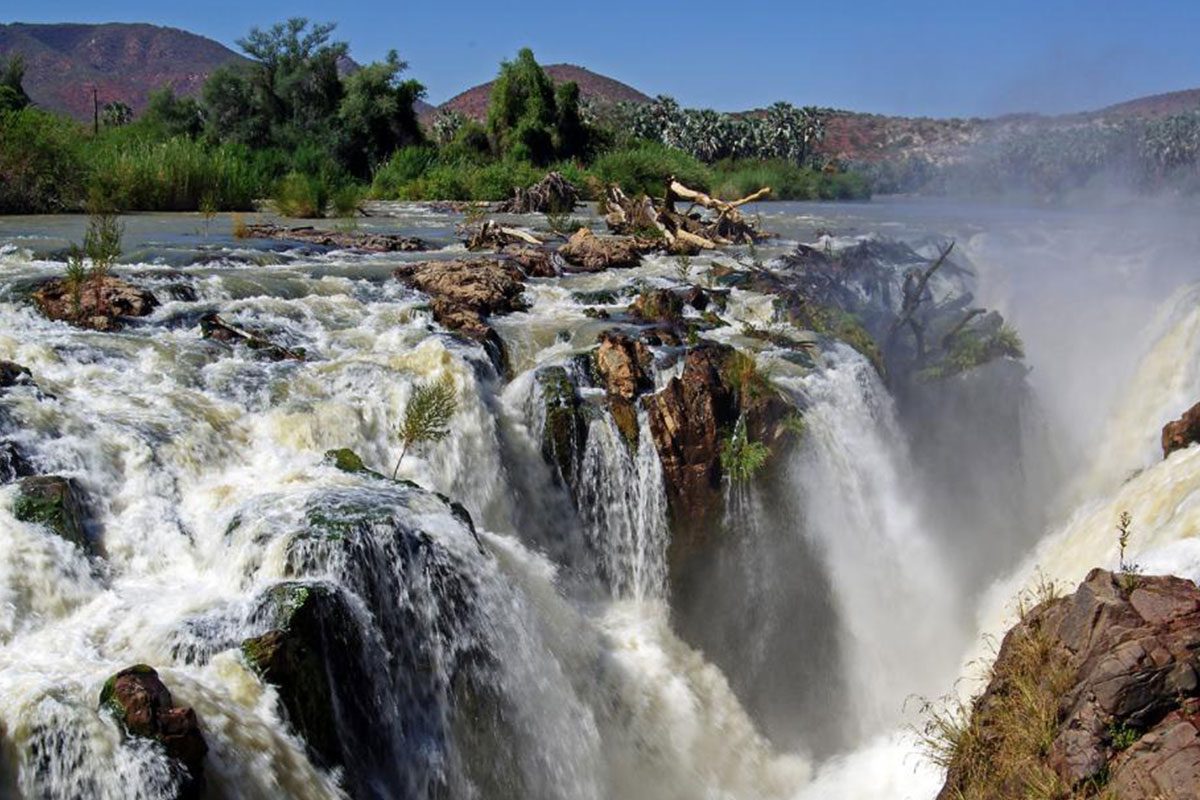
Guided Hikes At And Around The Epupa Falls.
Our guides can take you along the river or into the surrounding hills to explore the flora and fauna of Kaokoland.
Learn More
Enjoy stunning views of the Kunene, snaking through the deserted landscape.
Depending on your interests, we offer guided walks to one of the following:
- This hike around the Epupa Falls guides you to a white beach is below it. The walk will take you through the village to the main fall, where the Himba people often come to wash their clothes, bathe, or play in the shallow pools.
- Into the surrounding hills to explore the fauna and flora of this riverine area and beyond.
- The crocodile trail is a 3 km walk meandering eastwards along the Kunene riverbank.
- Birding walks at Epupa Falls and the surrounding area.
These walks can take up to three hours. During summers, they are best done in the early morning. The start time, however, depends on the guests and their interests.

Hiking
Explore the flora and fauna and enjoy the breathtaking view of Kaokoland with our hiking services.
Learn More
During your hike, you will likely come across Bushman’s poison bushes with their beautiful but deadly pink flowers and large Euphorbia bushes. The poisonous milky-white latex of these bushes was used by the San and Himba for hunting. You’ll also come across the makhani palms, mopane scrub, and the flat-topped umbrella thorn named Acacia tortilis.
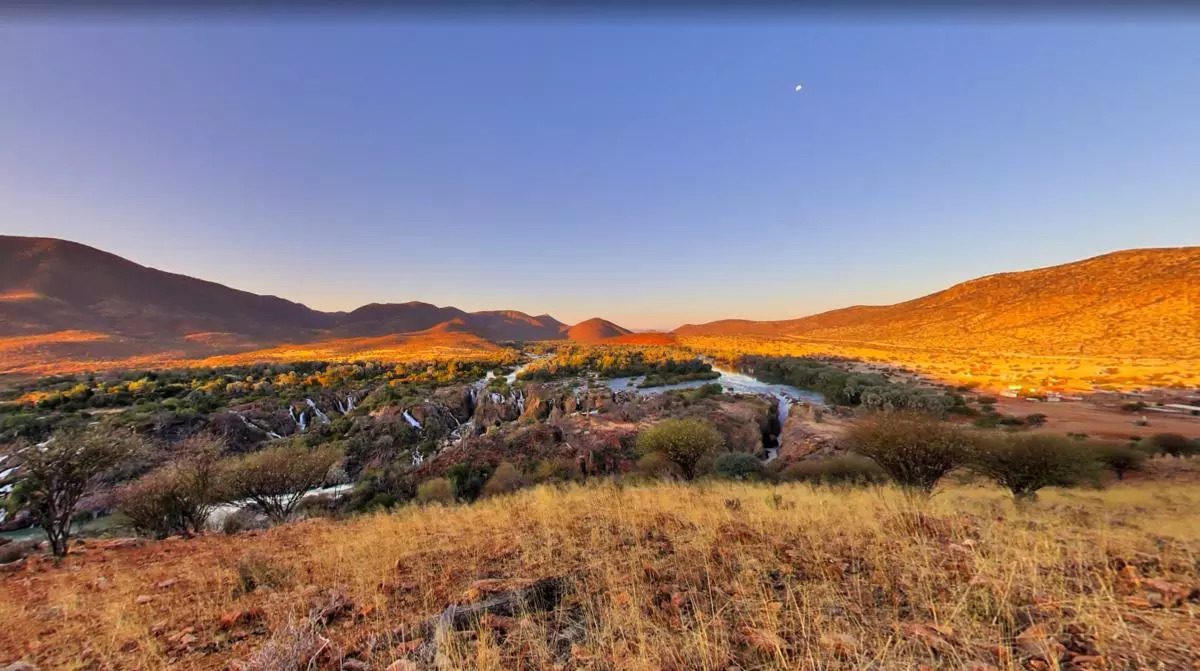
Guest Reviews
Coming Soon
Guest Experiences
The Himba People
One of the most striking things about the Himba is the color of their skin and hair and their unique way of dressing. They smear their skin with cattle fat, ash, and ochre to protect themselves from the harsh desert climate and the relentless heat of the sun. In addition, the paste gives the Himba a deep red color that is a highly desirable look in the Himba culture. The women wear small skirts made of goat skins adorned with shells and jewelry made of iron and copper. The men and boys wear goatskin loincloths.
Their houses are simplistic cone-shaped structures made with saplings covered in mud and dung.
In most areas, the Himba people are still unaffected by modern civilization and are rare and unique to experience.
Epupa Camp offers daily, guided tours to some of the different seasonal Himba settlements in the region. To avoid disturbing or ruining the Himba’s way of life and their fragile culture, we visit different settlements on a rotation basis and only with a knowledgeable Himba guide – all depending on the whereabouts and seasonal migration of the Himba.
Animals
The Kunene River also enjoys a rich birdlife. More than 240 different bird species have been counted so far, of which about 10 are endemic to the region. At our camp, 2-meter-long water monitors can almost always be seen on our beach.The charming cape otter lives close to the dining area, on the other side of the river, and crocodiles are often to be seen basking in the sun (but prevented from entering the camp area)
Kunene River
With its constant flow of water, it creates a lush, slim oasis along its banks that acts as a natural magnet to people and animals from all over the region. Whether meandering along the river on foot or gliding down the river in one of our rafts you will likely see Himba men, women, and children coming down to the river to collect water, bathe, play, or wash their clothes.
Sit by the riverside and enjoy the view with a good book and a cool drink by your side. Epupa Camp offers you a rare opportunity to enjoy looking at the birds building their nests in the treetops and the gurgling sounds of the passing water along its course.
Don’t miss out on the Epupa Falls, which is just a few minutes’ walk from the Epupa Camp.
Epupa Falls
Epupa Falls is not just a great place to see and photograph but also a great place to go for a dive. It is one of those hundreds of natural pools carved out of the rocks over millennia by the torrents of the falling water. If you don’t feel like getting soaked in the water, sit back and watch the Himba people bathing, washing, and playing. This in itself is a great experience.
Plants
In addition, you will find Euphorbia as well as Bushman poison. From February through April, the latter blossoms with beautiful pink flowers.
Kaokoland
The area surrounding Epupa Camp consists of richly colored rock walls and the lush Kunene River that snakes through the landscape creating a thin green oasis that gives life to a variety of exotic trees including the wild fig, baobabs, and waving makalani palms. Spectacular sunsets and the river’s perennially flowing waters mean that the area offers much to see and experience.
Completely untouched, this landscape has remained the same for thousands of years and yet always seems to change. From the soft pastels and deep shadows of the early morning and late afternoon to the harsh and rugged landscape of the midday sun, you will find that what at first seems devoid of life, slowly begins to come to life, as if the mountains themselves are breathing and have a soul of their own.
Kaokoland is simply magical. There is no better way to describe it and no other way but to experience it.
Recommended reading about the area includes:
- ‘Kaokoland: The Last Wilderness’ by Anthony Hall-Martin, Clive Walker, J. du P. Bothma
- ‘Himba Nomads & Namibia’ by Margaret Jacobsohn
- ‘Skeleton Coast’ by Amy Schoeman
- ‘The Place of Stunted Ironwood Trees: A Year in the Lives of the Cattle-Herding Himba of Namibia’ by David P. Crandall
- ‘Heat, Dust and Dreams: An Exploration of People and Environment in Namibia’s Kaokoland and Damaraland’ by Mary Rice and Craig Gibson
